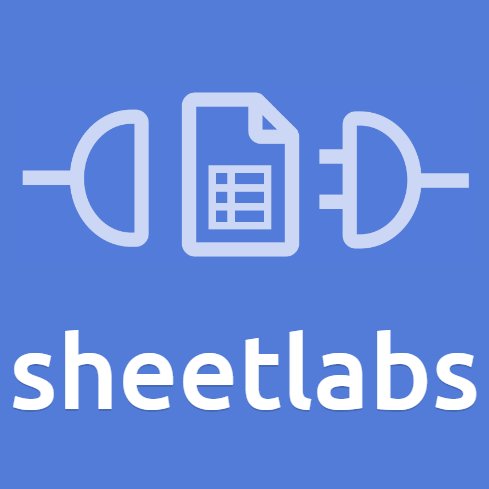Mock sample for your project: U.S. EPA Enforcement and Compliance History Online (ECHO) - Clean Air Act API
Integrate with "U.S. EPA Enforcement and Compliance History Online (ECHO) - Clean Air Act API" from epa.gov in no time with Mockoon's ready to use mock sample

U.S. EPA Enforcement and Compliance History Online (ECHO) - Clean Air Act
Version: 2019.10.15
Integrate third-party APIs faster by using "U.S. EPA Enforcement and Compliance History Online (ECHO) - Clean Air Act API" ready-to-use mock sample. Mocking this API will allow you to start working in no time. No more accounts to create, API keys to provision, accesses to configure, unplanned downtime, just work.
Improve your integration tests by mocking third-party APIs and cover more edge cases: slow response time, random failures, etc.
Description
Enforcement and Compliance History Online (ECHO) is a tool developed and maintained by EPA's Office of Enforcement and Compliance Assurance for public use. ECHO provides integrated compliance and enforcement information for over 1 million regulated facilities nationwide.
Air Rest Services provides multiple service endpoints, each with specific capabilities, to search and retrieve data on facilities regulated under the Clean Air Act (CAA). The returned results reflect data drawn from EPA's ICIS-Air database.
The getfacilities, getmap, getqid, and getdownload end points are meant to be used together, while the enhanced getfacilityinfo end point is self contained.
The getfacilityinfo end point returns either an array of state, county or zip clusters with summary statistics per cluster or an array of facilities.
The recommended use scenario for getfacilities, getqid, getmap, and getdownoad is:
1) Use getfacilities to validate passed query parameters, obtain summary statistics and to obtain a queryid (QID). QIDs are time sensitive and will be valid for approximately 30 minutes.
2) Use get_qid, with the returned QID, to paginate through arrays of facility results.
3) Use get_map, with the returned QID, to zoom in/out and pan on the clustered and individual facility coordinates that meet the QID query criteria.
4) Use get_download, with the returned QID, to generate a Comma Separated Value (CSV) file of facility information that meets the QID query criteria.
Use the qcolumns parameter to customize your search results. Use the Metadata service endpoint for a list of available output objects, their Column Ids, and their definitions to help you build your customized output.
Additional ECHO Resources: Web Services, About ECHO's Data, Data Downloads
Other APIs by epa.gov

U.S. EPA Enforcement and Compliance History Online (ECHO) - All Data
ECHO Rest Services provide multiple service endpoints, each with specific capabilities, to search and retrieve data on facilities regulated as Clean Air Act (CAA) stationary sources, Clean Water Act (CWA) dischargers, Resource Conservation and Recovery Act (RCRA) hazardous waste generators/handlers, and Safe Drinking Water Act (SDWA) public water systems. Data of interest from other EPA sources, such as the Toxics Release Inventory, is also supplied for context.
\
The getfacilities, getmap, getqid, and getdownload end points are meant to be used together, while the enhanced getfacilityinfo end point is self contained.
The getfacilityinfo end point returns either an array of state, county or zip clusters with summary statistics per cluster or an array of facilities.
\
The recommended use scenario for getfacilities, getqid, getmap, and getdownoad is:
\
1) Use getfacilities to validate passed query parameters, obtain summary statistics and to obtain a queryid (QID). QIDs are time sensitive and will be valid for approximately 30 minutes.
2) Use get_qid, with the returned QID, to paginate through arrays of facility results.
3) Use get_map, with the returned QID, to zoom in/out and pan on the clustered and individual facility coordinates that meet the QID query criteria.
4) Use get_download, with the returned QID, to generate a Comma Separated Value (CSV) file of facility information that meets the QID query criteria.
\
\
Use the qcolumns parameter to customize your search results. Use the Metadata service endpoint for a list of available output objects, their Column Ids, and their definitions to help you build your customized output.
\
Additional ECHO Resources: Web Services, About ECHO's Data, Data Downloads

U.S. EPA Enforcement and Compliance History Online (ECHO) - Resource Conservation and Recovery Act
RCRA Rest Services provides multiple service endpoints, each with specific capabilities, to search and retrieve data on hazardous waste handlers/facilities regulated under the Resource Conservation and Recovery Act (RCRA). The returned results reflect data drawn from EPA's RCRAInfo database.
\
The getfacilities, getmap, getqid, and getdownload end points are meant to be used together, while the enhanced getfacilityinfo end point is self contained.
The getfacilityinfo end point returns either an array of state, county or zip clusters with summary statistics per cluster or an array of facilities.
\
The recommended use scenario for getfacilities, getqid, getmap, and getdownoad is:
\
1) Use getfacilities to validate passed query parameters, obtain summary statistics and to obtain a queryid (QID). QIDs are time sensitive and will be valid for approximately 30 minutes.
2) Use get_qid, with the returned QID, to paginate through arrays of facility results.
3) Use get_map, with the returned QID, to zoom in/out and pan on the clustered and individual facility coordinates that meet the QID query criteria.
4) Use get_download, with the returned QID, to generate a Comma Separated Value (CSV) file of facility information that meets the QID query criteria.
\
\
Use the qcolumns parameter to customize your search results. Use the Metadata service endpoint for a list of available output objects, their Column Ids, and their definitions to help you build your customized output.
\
Additional ECHO Resources: Web Services, About ECHO's Data, Data Downloads

U.S. EPA Enforcement and Compliance History Online (ECHO) - Detailed Facility Report (DFR)
DFR Rest Services provide multiple service endpoints, to retrieve detailed facility location, enforcement, compliance monitoring, and pollutant information for any single facility. See the Detailed Facility Report (DFR) Help Page (https://echo.epa.gov/help/reports/detailed-facility-report-help) for additional information on the DFR. Additionally, a Data Dictionary (https://echo.epa.gov/help/reports/dfr-data-dictionary) is also available.
There is one primary service end point, get_dfr, that provides all available DFR data. All other service end points that are exposed, will return data on a single section of the DFR.
\
Additional ECHO Resources: Web Services, About ECHO's Data, Data Downloads

U.S. EPA Enforcement and Compliance History Online (ECHO) - Enforcement Case Search
CASE Rest Services provide multiple service endpoints, each with specific capabilities, to search and retrieve data on civil cases entered into the
Integrated Compliance Information System (ICIS) and criminal cases entered into the Summary of Criminal Prosecutions database.
See Enforcement Case Search Help (https://echo.epa.gov/help/enforcement-case-search-help) for additional information on searching civil and criminal cases.
\
The getcases, getmap, getqid, and getdownload end points are meant to be used together, while the enhanced getcaseinfo end point is self contained..
The recommended use scenario for getcases, getqid, getmap, and getdownoad is:
\
1) Use getcases to validate passed query parameters, obtain summary statistics and to obtain a queryid (QID). QIDs are time sensitive and will be valid for approximately 30 minutes.
2) Use get_qid, with the returned QID, to paginate through arrays of case results.
3) Use get_map, with the returned QID, to zoom in/out and pan on the clustered and individual facility coordinates, related to the returned cases, that meet the QID query criteria.
4) Use get_download, with the returned QID, to generate a Comma Separated Value (CSV) file of facility information that meets the QID query criteria.
\
In addition to the service endpoints listed above there are two detailed case report services, one for civil cases (getcasereport) and one for criminal cases (getcrcasereport).
See the Civil Enforcement Case Report Help (https://echo.epa.gov/help/reports/enforcement-case-report-help) and the Criminal Case Report Help (https://echo.epa.gov/help/reports/criminal-case-report-help) for additional information
on then data returned from these two services.
\
Additional ECHO Resources: Web Services, About ECHO's Data, Data Downloads

U.S. EPA Enforcement and Compliance History Online (ECHO) - Clean Water Act (CWA) Rest Services
CWA Rest Services provides multiple service endpoints, each with specific capabilities, to search and retrieve data on facilities regulated under the Clean Water Act (CWA) and managed under the National Pollutant Discharge Elimination System (NPDES) program. The returned results reflect data drawn from EPA's ICIS-NPDES database.
\
The getfacilities, getmap, getqid, and getdownload end points are meant to be used together, while the enhanced getfacilityinfo end point is self contained.
The getfacilityinfo end point returns either an array of state, county or zip clusters with summary statistics per cluster or an array of facilities.
\
The recommended use scenario for getfacilities, getqid, getmap, and getdownoad is:
\
1) Use getfacilities to validate passed query parameters, obtain summary statistics and to obtain a queryid (QID). QIDs are time sensitive and will be valid for approximately 30 minutes.
2) Use get_qid, with the returned QID, to paginate through arrays of facility results.
3) Use get_map, with the returned QID, to zoom in/out and pan on the clustered and individual facility coordinates that meet the QID query criteria.
4) Use get_download, with the returned QID, to generate a Comma Separated Value (CSV) file of facility information that meets the QID query criteria.
\
\
Use the qcolumns parameter to customize your search results. Use the Metadata service endpoint for a list of available output objects, their Column Ids, and their definitions to help you build your customized output.
\
Additional ECHO Resources: Web Services, About ECHO's Data, Data Downloads

U.S. EPA Enforcement and Compliance History Online (ECHO) - Safe Drinking Water Act
SDW Rest Services provides multiple service endpoints, each with specific capabilities, to search and retrieve data on public water systems regulated under the Safe Drinking Water Act (SDWA). The returned results reflect data drawn from EPA's Federal Safe Drinking Water Information System (SDWIS) database.
\
The getsystems, getqid, and get_download end points are meant to be used together.
\
The recommended use scenario for getsystems, getqid, and get_downoad is:
\
1) Use getsystems to validate passed query parameters, obtain summary statistics and to obtain a queryid (QID). QIDs are time sensitive and will be valid for approximately 30 minutes.
2) Use get_qid, with the returned QID, to paginate through arrays of water system results.
3) Use get_download, with the returned QID, to generate a Comma Separated Value (CSV) file of water system information that meets the QID query criteria.
\
\
Use the qcolumns parameter to customize your search results. Use the Metadata service endpoint for a list of available output objects, their Column Ids, and their definitions to help you build your customized output.
\
Additional ECHO Resources: Web Services, About ECHO's Data, Data Downloads

U.S. EPA Enforcement and Compliance History Online (ECHO) - Effluent Charting and Reporting
ECHO provides integrated compliance and enforcement information for over 1 million regulated facilities nationwide.
EFF Rest Services provides the data for ECHO's Effluent Charts, a set of dynamic charts and tables of permitted effluent limits, releases, and violations over time for Clean Water Act (CWA) wastewater discharge permits issued under the National Pollutant Discharge Elimination System (NPDES).
See Effluent Charts Help (https://echo.epa.gov/help/reports/effluent-charts-help) for additional information.
\
The are 3 service end points for Effluent Charts: getsummarychart, geteffluentchart, and downloadeffluentchart.
\
1) Use getsummarychart to retrieve a summary matrix of effluent parameters by effluent outfall and an overall violation status for a provided NPDES Permit and date range.
2) Use geteffluentchart to retrieve detailed Discharge Limit, DMR and NPDES Violation information for a provided NPDES Permit, date range, effluent parameter, or outfall.
3) Use downloadeffluentchart to generate a Comma Separated Value (CSV) file of the detailed data provided with get_effluent chart, for a provided NPDES Permit, date range, effluent parameter, or outfall.
\
Additional ECHO Resources: Web Services, About ECHO's Data, Data Downloads
Other APIs in the same category

BC Route Planner REST API
Please note that you may experience issues when submitting requests to the delivery or test environment if using this OpenAPI specification in other API console viewers.
Developer API keys are unique and can be acquired with a GitHub account. Production government applications may use organization API keys acquired by contacting DataBC.
Prime ReportStream
Transport Department, Tamil Nadu
Karnataka Department of Transport, Karnataka

rv API
This API returns information about all of the verses in Rig Veda. The results are JSON objects that contain the name of the god, poet, and meter of the verses in Rig Veda, the category of the god and the poet, and the mandal and sukta number.
The API uses the Swagger 2.0 specification.
Authentication
This is an open API.
Try it out
This sandbox can be used to get data for only one kind of resource, that is, to fetch the data for a category being sung to.
The remaining resources work a similar fashion. For details, see the reference documentation.

Open States API v3
Register for an account
As of August 2021 we are working to restore experimental support for committees.
During this period please note that data is not yet available for all states
and the exact format of the committees endpoints may change slightly depending on user feedback.
If you have any issues or questions use our
GitHub Issues to give feedback.
Transport Department, Jammu & Kashmir
Motor Vehicle Department, Maharashtra
